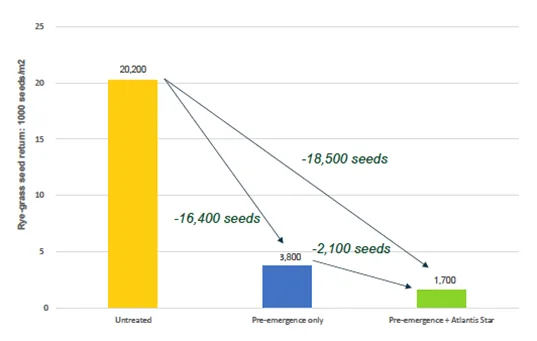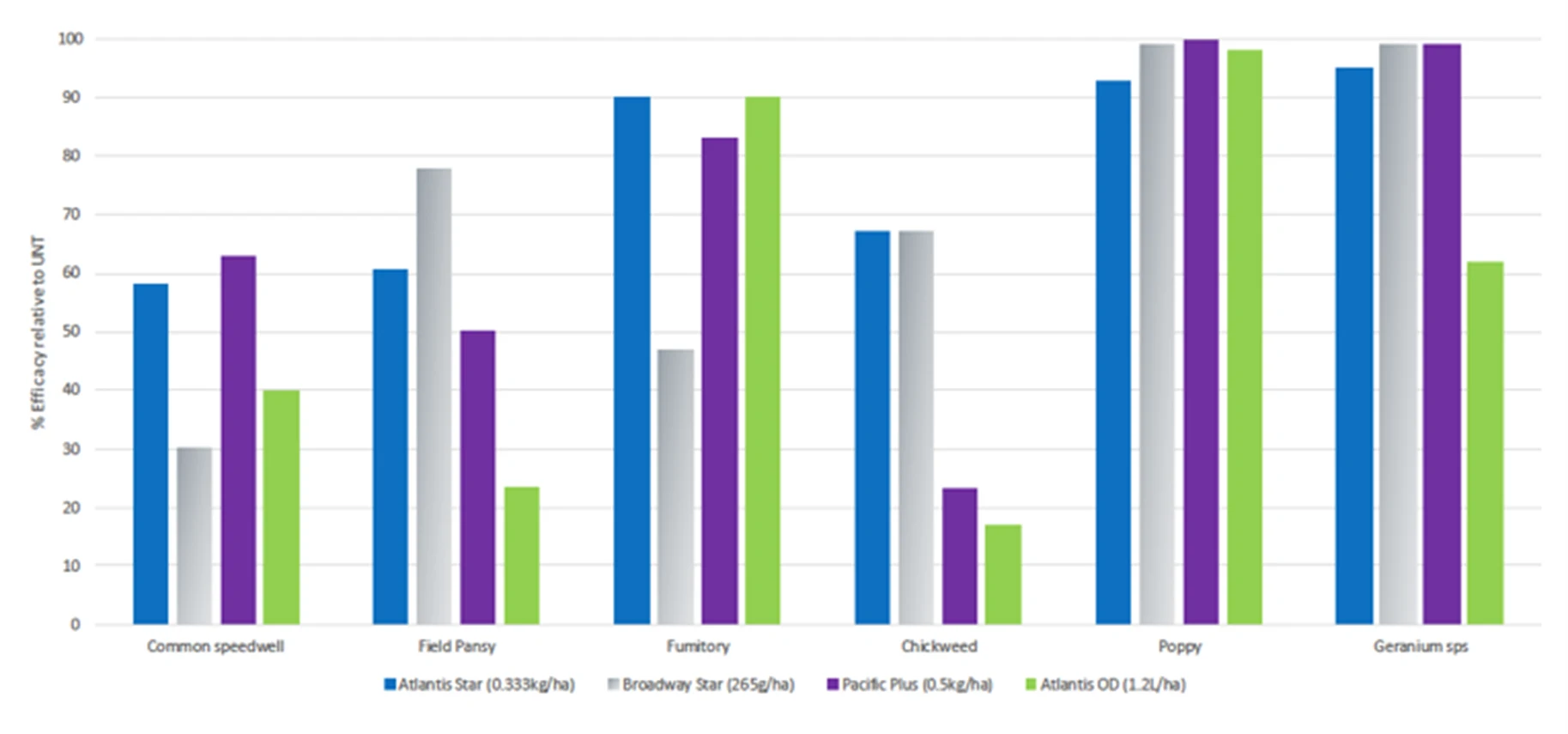
Controlling weeds in spring has a two-fold benefit. Firstly, it stops weeds taking light, water, space and nutrients from the crop, helping maintain overall yield. This is known as the direct benefit of weed control. Then there are the indirect benefits, most importantly reducing weed seed return, so there are fewer potential troublemakers next season.
Weighed against these benefits is the cost of any herbicide application and the fear it will not perform as expected due to resistance or poor application conditions. There are other control options such as hand-rogueing in late spring or patch spraying. However, the cost and availability of labour means that rogueing isn’t as attractive as 5–10 years ago and of course patch spraying has a big impact on yield – it kills the crop.
Unless the problem is so mild that rogueing is manageable or, conversely, if the weeds are so dense that only spraying it off will work, then a spring post-em is worth considering.
Author
| 8th January 2024Tags
We Highly Recommend:
Herbicides
Atlantis Star
A highly-effective herbicide for control of grass-weeds and broad-leaf weeds in winter wheat. Atlantis Star is a coformulation of three ALS-Inhibitors (HRAC Group 2) with foliar and some root activity
Read moreHerbicides
Pacifica Plus
A highly active herbicide (a combination of three sulfonylurea herbicides) with foliar and some root activity.
Read moreMeasuring the benefit of a post-em application – 2023 trial results
The question of resistance
Resistance is the number one reason for reluctance to use a mesosulfuron-based post-em like Atlantis Star or Pacifica Plus. In the worst cases, it can mean the herbicide is ineffective against black-grass or ryegrass; however, many weeds retain a degree of sensitivity. This is because the most common type of resistance is enhanced metabolism which affects plants to varying extents. It is not an ‘on-off’ switch like target-site resistance.
In practice, this means the first step is to check the kind and degree of resistance you have in your weed population. Resistance status can vary field-by-field and by weed, meaning certain actives retain efficacy on part of the weed spectrum.
The Bayer/NIAB 2021 ryegrass survey showed how resistance patterns in ryegrass are not easily predictable and that every field needs to be judged on its own merits. A key point is that previous poor control may not be due to resistance as application and timing problems may be the cause. Bayer’s testing regime in 2021 and 2022 found that 10% of black-grass samples and 58% of ryegrass samples suspected of resistance due to poor control were in fact susceptible.
In the worst cases with target-site or very strong metabolic resistance it is best to look at different options such as more chemistry at the pre-em timing, and additional cultural techniques to control weeds. Where weeds are susceptible or moderately resistant (RR rating), focus on application technique and timing to achieve the best result. These have a massive impact on the overall result and determine if the post-em is money well spent.
Find out more about optimum application technique here.
And to learn more about the best conditions for applying mesosulfuron-based products here.
Complete the programme – Italian ryegrass control
In 2023 trials, applying Atlantis Star showed a sustained improvement in ryegrass control compared to a pre-em only programme. Across all trials this averaged 11% increased control, equating to 21 fewer ryegrass plants per square metre. Assuming each plant produces 1000 seeds, this means 2,100 fewer seeds per m2 that can potentially germinate in subsequent crops.



Looking at specific programmes, using a post-em saw a significant gain in overall weed control compared to just the pre-em. However, where the pre-em performed very well such as Liberator + Proclus + Defy the gains were smaller but still mean less seed in the seedbank which could be critical for long-term control.
In the context of the 23–24 season, very high levels of control from pre-ems are likely to be a rarity due to weather conditions. A series of storms and general wet weather from October onwards disrupted pre-em and peri-em applications. As a result, there is likely to be a significant ryegrass burden this spring that can be treated by Atlantis Star or Pacifica Plus.
We Highly Recommend:
Herbicides
Atlantis Star
A highly-effective herbicide for control of grass-weeds and broad-leaf weeds in winter wheat. Atlantis Star is a coformulation of three ALS-Inhibitors (HRAC Group 2) with foliar and some root activity
Read moreHerbicides
Pacifica Plus
A highly active herbicide (a combination of three sulfonylurea herbicides) with foliar and some root activity.
Read moreFinish the job - black-grass control
Against black-grass, the same strategy of using the post-em to slash seed return applies. In 2023 trials, there was a much smaller improvement in control from the post-em because pre-ems were very effective by themselves. However, Atlantis Star applied as the only herbicide in the programme still delivered 40% control, demonstrating it can make a significant impact on weed numbers and potential seed return.
Like ryegrass, very wet weather has meant pre-em programmes were disrupted. As a result, there may be lower levels of control on many farms, so there will be more need for a post-em to help tidy up any black-grass plants that have survived until spring.
At the time of writing (3 January), we are in the aftermath of another heavy storm; however, the forecast is for colder, drier conditions for the rest of January. If, and it is a big ‘if’, this is the case, there may still be a chance to get weed control back on track in early February. Ground will have time to dry out and cold weather will slow, or halt weed growth which raced ahead during the very mild weather in December.
Graph: Black-grass control; Atlantis Star applied 4 April following various pre-em programmes.

Broad-leaf weeds
Atlantis Star contains three grass-weed actives, but it also offers good control of several types of broad-leaf weeds. Trials in 2023, measured the performance of Atlantis Star from both a mid-March and mid-April applications compared to other post-em herbicides. Against speedwell, pansy, fumitory, chickweed, poppy and germanium in provided good control at both timings.

Mid-April application

The importance of broad-leaf weed control can’t be overlooked, as they can impact yield and be a nuisance at harvest. In these trials, crop ear counts found an average of 250 ears/m2 in the untreated whereas, in the plots receiving a post-em it was approximately 400 ears/m2 which is likely to have an impact on overall yield.
Brome and wild oat control
There is no new data from the 2023 season about brome and wild oat control. Visit the brome and wild oat knowledge hubs for previous seasons’ trial results and other advice to control these weeds.